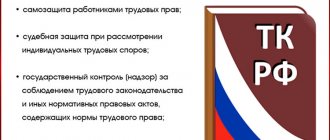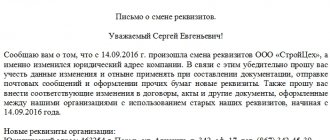Formation of personnel policy: influence of factors
Activities in this area begin with identifying the needs that need to be satisfied. Potential opportunities in working with personnel are identified. To formulate the correct personnel policy, it is necessary to find out what is most important for the operation of the enterprise.
The formation of personnel policy is influenced by:
- Environmental factors – These are phenomena that an enterprise must take into account. You cannot avoid them, since everything can be enshrined at the state level. This includes:
- State of the labor market.
- Trends in the country's economic growth.
- The legal framework of the country, which can make changes to the labor code.
- Scientific and technological progress (if new technologies appear, then we need specialists who can manage them).
- Internal environmental factors – this is what directly happens at the enterprise itself. This can include:
- Personnel management style.
- Main goals for achieving results.
- Method of leadership.
- Methods of enterprise management.
Fundamental Principles
The principle of personnel policy is the synchronicity of the achievement of individual and organizational plans.
It is based on the following doctrines:
- Scientific, application of advanced developments to ensure maximum economic and social results.
- Systematic, involving all areas of personnel activity, working out the interdependencies and interconnections of work elements.
- Effective compensation of costs for HR-related activities through the results of the organization’s economic activities.
- Accounting, positive or negative impact of any personnel procedure on the economic and social effect.
https://youtu.be/d9mUYawoozU
Main directions of personnel policy: principles and characteristics
If we talk about different enterprises, then each has a certain direction. A more visual and common view is the following:
- Personnel management of an organization - has the same management principle for both general and individual ideas. In this case, you have to look for constant compromises between employees and senior management.
- Selection and placement of personnel consists of several principles - professional competence, individuality, compliance, practical achievements. It is characterized by the fact that each employee meets his qualifications and occupies his position. He must be experienced and have professional skills, and have his own management style.
- Formation and preparation of a reserve for promotion to leadership positions - this area includes several principles: rotation, suitability for the position, manifestation in work, assessment of the individual qualities of the employee. It is characterized by the fact that promotion is carried out on the basis of a competition or tender. Active training is carried out for the employee who must assume a leadership position. The candidate is determined based on his experience.
- Personnel assessment and certification is determined using the principles of indicator selection, quality of task performance and qualification assessment. Using this direction, you can determine the main indicators that should be adhered to in your work and which still need to be developed. In this way, it is possible to assess the potential of employees and ways to achieve profit maximization.
- Personnel development is based on the principles of advanced training, opportunities for self-development, and ways of self-expression. This direction is very necessary, as it will help to prepare qualified personnel as much as possible.
- Motivation and stimulation of personnel, remuneration is an important point, which is determined on the basis of the principles of equal combination and incentives. In this case, tasks and deadlines for their completion should be set. There must be incentive factors, on the basis of which a person will use all his best qualities.
Types of tools
- Personnel planning - before applying certain methods to work, it is necessary to build a clear plan, which should be worked out before this. Having a good plan, you can build the right personnel policy.
- Current personnel work is a process that is already involved in implementation, but before this, certain aspects have already been worked out by personnel inspectors.
- Personnel management is not an easy job, which is carried out by a specially trained person. He, in turn, must have skills in working with personnel. Such a person should be respected and listened to.
- Activities for its development and advanced training are an important point that contributes to good and high-quality work. Before introducing new activities, it is necessary to study the people and their work.
- Measures to solve social problems - in any team, disagreements and other problematic situations constantly arise that the administration must be able to solve.
- Remuneration and motivation – to obtain maximum output from employees, it is necessary to motivate the employee and reward him financially accordingly. Thus showing that his work is not in vain.
Production stages
Like any activity, it has its own stages of implementation. They also consist of:
- Research of the enterprise's labor resources, on the basis of which the forecast is based.
- Determining the main points and priorities of activities.
- Familiarization of the administration and personnel of the enterprise with the adopted policy. The main way to promote information.
- Determining the budget for the implementation of a new personnel policy that will ensure effective labor incentives.
- Development of basic activities for the formation of personnel staff.
- Achieving goals through special programs for development, adaptation of employees, and advanced training.
- Summing up – analysis of all activities related to organizing personnel policy, identifying problem areas, assessing the potential of employees.
Goals
The main purpose of personnel policy is to timely determine goals in relation to the overall development strategy of the enterprise, identify problems and tasks, and find solutions.
https://youtu.be/ATUGk6agWHM
She sets the following plans for herself:
- Saving and improving human resources.
- Formation of a mature team.
- Education of favorable working conditions.
- Development of employer positions in areas of personnel work.
- Raising the prestige of the company.
An effective policy is aimed at the high-quality implementation of planned goals, so the main tasks will be:
- Implementation of an HR management system.
- Designation of requirements for the organization's labor resources.
- Choosing a remuneration system, material and moral incentives.
- Selection and acceptance of candidates that meet the company's needs.
- Rational use of working potential.
- Regulation of labor relations in terms of the rights and responsibilities of the employee.
- Education.
Criteria for evaluation
- Quantitative and qualitative composition of personnel. Quantitative is divided into three categories - management, management and service personnel. If we discuss the qualitative composition, then employees are divided among themselves according to their level of education, work experience, and advanced training by employees.
- Employee turnover rate is one of the most important factors in modern business. An increased level is observed in enterprises where special education is not required. Thus, the entrepreneur wants to make a quick profit without spending money on personnel policies. And the most interesting thing is that initially you can achieve a good result, but after some time the development will be very weak, since there is no incentive for workers in their work.
- Flexibility of the policy – any activity must be manageable. When a new personnel policy is introduced at an enterprise, it is necessary that it can be implemented for any department. Each production department has its own goal and the implementation of new policies must correspond to their specifics.
- The degree to which the interests of the employee / production are taken into account - any changes must be perceived by employees. This will help the staff to perform their jobs to the best of their ability. As stated in the previous criterion, the new policy must be consistent with the responsibilities being performed. Consistency with the team is the first step to success.
Personnel policy is a key area of all personnel management work; it is characterized by a set of methods aimed at preserving and developing human resources, a system of fundamental principles that are implemented by the personnel service of the enterprise. In this aspect, personnel policy serves as a strategic line for working with personnel. Consequently, personnel policy is an activity aimed at creating a workforce that best contributes to combining the goals of the priorities of the enterprise and employees
Personnel policy is a system of rules and regulations that bring human resources into line with the company's strategy (i.e., all activities related to working with personnel - selection, staffing, certification, training, promotion - are planned in advance and coordinated with a common understanding of goals and objectives organization).
Many modern authors (Kibanov, Odegov, Bazarov) agreed on the advisability of dividing the types of personnel policies depending on the goals of enterprises in the field of personnel management (Fig. 5.1).
Rice. 5.1. Types of personnel policy
Passive personnel policy
basically comes down to eliminating the possible negative consequences of particular situations.
With a reactive policy
current personnel issues are monitored, conflict situations and their causes are investigated. Reactive personnel policy is limited to operational personnel planning.
Talk about preventive personnel policy
It is advisable when the organization has detailed short- and medium-term development forecasts in the field of personnel management. Based on such forecasts, areas of activity and specific measures are developed, but the organization does not have the means to influence the solution of personnel problems.
The most progressive is the active type of personnel policy.
HR specialists conduct regular research, develop sound programs, and the enterprise has the means to influence the personnel situation. With this type of personnel policy, the main thing is to conduct a competent analysis that takes into account the influence of all factors and predict possible changes in the situation.
Open personnel policy
is due to the fact that the organization interacts with potential employees for all positions.
With a closed personnel policy
the organization focuses on attracting new personnel to the lower level of positions, and replacements in positions of middle and senior levels are the prerogative of existing employees of the organization.
7. Concept, objectives and features of personnel policy of modern enterprises (organizations)
Personnel policy is formed in accordance with the strategy of the enterprise and is aimed at organizing an effective management program to solve the problems facing all departments of the enterprise.
The purpose of personnel policy is to ensure an effective organization through an optimal balance between the processes of updating and maintaining the numerical and qualitative composition of personnel in accordance with the needs of the organization.
To achieve the goals, personnel policy must solve the following tasks:
1. provide all production areas with a workforce of the necessary qualifications; optimize the personnel composition of key structural divisions;
2. effectively use the skills and potential capabilities of each employee;
3. create an organizational culture that unites employees and ensures their willingness to support management decisions to achieve common goals;
4. stimulate and support the desire of each employee to maintain a favorable climate in the team;
5. to motivate the employee to work highly productively and efficiently;
6. create and maintain organizational order, strengthen executive discipline, increase employee responsibility for fulfilling duties, strengthen labor and production discipline;
7. satisfy the interests of various groups of workers.
A special task of personnel policy is to prepare answers to all employee questions related to the organization’s personnel management. The tasks of personnel policy should be constantly the focus of attention in all main functional departments - from the search and selection of personnel to the formation of organizational culture.
8. Elements of personnel policy and ways of its implementation
Elements of personnel policy:
1. Employment policy: Personnel marketing; attraction, selection and hiring, adaptation, creation of attractive conditions; career planning and employee promotion.
2. Assessment and development policy: Carrying out assessment procedures, determining the assessment value; organization of the certification process; organization of vocational training; forms of additional personnel training.
3. Motivation policy: Application of modern and effective forms and systems of wages; the use of various forms of material and non-material labor incentives.
4. Policy of social and labor relations: development of directions for resolving conflict situations; relations with trade unions; people management technology; social partnership.
Personnel policy (paths) is implemented through specially developed technologies and methods for recruiting and promoting personnel, exchanging personnel information, forecasting personnel needs, personnel assessment, forming teams to solve certain problems, etc.
A personnel management strategy is a set of organizational actions carried out in relation to personnel, the basic principles and goals of working with personnel, taking into account the organizational and personnel potential of the enterprise. The organization's personnel management strategy is designed to connect numerous aspects of personnel management, optimize their impact on employees, especially on their work qualities and qualifications, and thereby create a single combination of elements of personnel management policy that corresponds to a specific target group.
The relationship between organizational development strategies and personnel management is presented in the figure below.
Rice. The relationship between organizational development strategies and personnel management
What activities are needed?
In order to improve personnel policy, it is necessary to use the following measures:
- The selection of personnel is based on certain criteria that will correspond to their responsibilities. The more experience a person has, the higher the level of productivity at work. Newcomers should also not be pushed aside, as they have a different perspective on work, and they can contribute to new discoveries that will have a positive impact on development as a whole.
- To ensure a stable and continuous production process, it is necessary to involve long-term cooperation.
- The personnel department must provide the enterprise with all the necessary staff as much as possible. Management should pay attention to this process. The company operates stably when all jobs are filled.
- HR specialists must conduct an analysis of the workforce at the enterprise. They are required to ensure that staff members are properly allocated so that their qualifications are appropriate for the position they occupy.
- The management of the enterprise must provide its staff with courses that can improve their skills. Thus, the company will have experienced workers who will be able to complete work of any complexity. Loss of working time and manufacturing defects can be avoided due to lack of experience.
The personnel policy of an enterprise is a very important point that contributes to the maximum development of the enterprise. There are several areas that help maximize enterprise profits.
Known directions contribute to the correct distribution of personnel in their places.
The enterprise's personnel policy must be updated from time to time. Over time, not only people change, but also their views on the work process. Innovation drives positive results that can be achieved by people with a fresh perspective on the production process. You should not adhere to the old personnel policy, as it will not only be ineffective, it can lead the company to liquidation.







